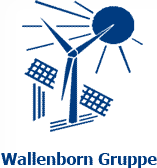
The town Senj is situated along the Croatian Adriatic coast between the towns Rijeka and Zadar, half way between the sea and fruitless land, in the border region between the mountain ranges Velebit and Kapela. The town has got around 10,000 residents and is part of the Croatian county Lika-Senj.
The climate in and around Senj shows some special characteristics: In the Lika-Senj region, four basic climatic types alternate across a 25 km wide air corridor.
These four climatic zones make the region attractive for tourists and spa guests who value the pure, healthy air in the region.
The air purity is a result of the Bora, a wind that is known as one of the strongest in the world with its high average wind speeds – the gusts can reach up to 210 km/ h. Being a cold, dry downslope wind, in summer, and especially in winter, it is typical for the Adriatic coast of Croatia. It orginates in the Lika high valley and brings its stormy being into the cravesses and the west side of the Velebit, after which it dives down over the waters of the Adriatic Sea.

The site of the wind park is located around 4.5km north east of Senj, in the region of Licko-senjska županija in the Northern foothills of the Velebit mountains. According to wind surveys this makes the region particularly suitable for the production of electricity using wind power.
Initially, 14 wind turbines were set up manufactured by Vestas – type V90 3.0 MW – with a nominal output of 3 MW each plant, on heights of 613 metres to 787 metres above sea level.
As the site is characterised by a north east wind drift, the yield from the wind farm is provided by winds coming from north easterly and south westerly directions. On a hub height of 80m wind speeds of around 8.8m/s are being measured.
Due to the location being a strong wind area that is characterised by sudden and extreme winds, a specific early warning system has been developed to minimise technical downtimes and to avoid overstraining the turbines while still achieving an optimum exploitation of the wind potential. The early warning system is supposed to ensure that the wind turbines are being switched off in case extreme wind conditions arise, which are outside the product specification of a V90 – 3.0 MW.

Not just because of the Bora winds, but also in many other respects the development and construction of the wind farm presented us with a lot of challenges.
Croatia had not yet been part of the European Union. For this reason, it was particularly difficult to fulfil the country specific conditions to be able to start with the realisation of the wind park. It was necessary to get work permits and residential permits for all staff as well as the required approvals for the installation works, electronics, grid connection etc.
Also, at the time there were no comparable projects from which one could have taken some valuable experiences for the approval and development phase – the project Senj I was the first wind farm that was planned, developed and built to be connected to the Croatian national grid (110kV). The entire approval and development phase, and the planning conditions that go without saying in the German market had to be adapted to Croatian rules and regulations.
Even the terrain in the region had to be mastered – the narrow twisting roads made the transport of the 45m long rotor blades to a real challenge.
However, the highly motivated project team, never loosing sight of the main goal to erect the largest wind park in Croatia, managed to overcome all obstacles and completed this exceptional project.





